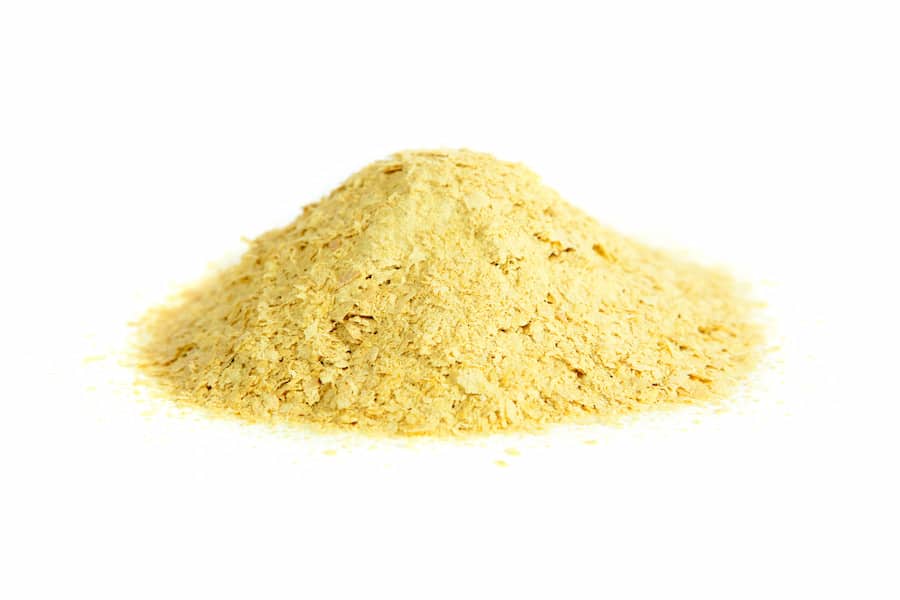If you buy something through a link in our posts, we may get a small share of the sale.
Homebrewers and beer makers often have to decide how much yeast nutrient to add to their batch of beer. The answer to how much nutrients per gallon is not always easy to determine, as various factors come into play. So, how much yeast nutrient per gallon?
Contents
How Much Yeast Nutrient per Gallon Do You Need?
You need one teaspoon of yeast nutrient per gallon in the last 10 minutes of the boil for beer. You can add it earlier; however, the benefits are not as pronounced. For wine, it is best to add 1/2 teaspoon per five gallons just before adding the yeast (before fermentation).

If you are making a high gravity beer, such as a barleywine or imperial stout, you may want to add up to double the standard amount of yeast nutrient. This will help the yeast ferment the higher gravity wort and produce a cleaner tasting beer.
Getting the correct dosage of nutrients is important for the quality and taste of your homebrewed beer or wine. By adding the correct amount of nutrients, you can help the yeast to ferment the sugar and produce a cleaner tasting beverage.
What Is Yeast Nutrient?
Yeast nutrient is a food source for yeast. It is typically made up of nitrogen, phosphates, and minerals. These nutrients help the yeast to grow and reproduce quickly. They also help the yeast produce alcohol and carbon dioxide gas during the fermentation.
Yeast nutrients are available in powder or liquid form. It is often added to beer and wine musts (unfermented wort or grape juice) to help the yeast to ferment the sugars into alcohol.
How Do Yeast Nutrients Work?
It works by providing the yeast with the necessary nutrients to grow and reproduce quickly. The yeast needs these nutrients to produce alcohol and carbon dioxide gas during fermentation. The following steps are involved in the yeast nutrient process:
- The yeast takes in the nutrient and uses it for energy.
- The yeast uses the nitrogen in the yeast nutrient to produce proteins.
- The proteins are used to build new cells and reproduce.
- The yeast also uses the phosphates in the nutrient to produce alcohol and carbon dioxide gas.
- The alcohol and carbon dioxide gas is produced during the fermentation process with the help of the yeast nutrients

Factors to Consider When Determining How Much Yeast Nutrient per Gallon
There are a few factors to consider when determining how much yeast nutrients to add to your batch of beer or wine. The following are some of the most important factors:
The Type of Yeast You Are Using
The type of yeast plays a vital role in how much nutrient is needed. Different types of yeast have different nutritional requirements. Therefore, the amount of yeast nutrients you need to add will vary depending on your yeast.
The Specific Gravity of the Wort or Must
The gravity of the wort or must is another crucial factor to consider when determining how much nutrient to add. The gravity of the wort must determine the amount of sugar that is available for the yeast to ferment. The higher the gravity, the more nutrients you will need to add.
The Fermentation Temperature
The fermentation temperature also plays a role in how much nutrient is needed. The higher the temperature, the more nutrients you will need to add. The fermentation temperature should be between 68 and 78 degrees Fahrenheit in most cases.
Therefore, brewers should consider the specific gravity of their wort and the fermentation temperature when determining how much nutrients to add.
The pH Level of the Wort
The pH level is an essential factor. The ideal pH level for fermentation is between 4.0 and 6.0. The pH level can impact the yeast’s ability to ferment the sugars in the wort. If the pH level is too high or too low, it can affect the yeast’s ability to utilize the nutrient in the yeast.

Frequently Asked Questions
Can You Use Too Much Yeast Nutrients?
Too much nutrient can lead to an off-flavor in your beer or wine. Therefore, following the manufacturer’s directions is essential when adding yeast nutrients to your batch.
Too much can also lead to an organic compound called ethyl carbamate forming in your beer or wine. Ethyl carbamate is a carcinogen, and it can be harmful to your health if consumed in large quantities.
When Should I Add Yeast Nutrients?
The best time to add yeast is the last 10 minutes of the boil. However, you can also add it to the must or wort before fermentation begins.
Conclusion
Yeast nutrients play an important role in the yeast fermentation process. It is essential to add the correct amount of yeast nutrients in order to produce high-quality beer or wine. Considering the factors mentioned above will help you determine how much nutrient to add to your batch.

